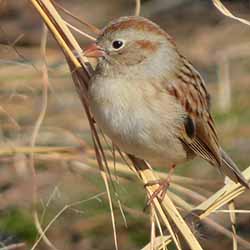
Having found ourselves indoors for the past year as a result of the COVID-19 pandemic, it comes as no surprise that so many people found solace in birdwatching from the safety of their own homes. No matter where you live, local wildlife can almost always be spotted in your yard or outside your window if you look closely enough. Such easy access to nature at a time when many of us are unable to enjoy it as before is a source of great comfort. Creating wildlife-friendly spaces in your local area is therefore a great way to not only bring nature directly to you, but to create connectivity for animals whose own natural habitats are threatened by fragmentation and human activity. The addition of bird feeders, baths, or houses, native plants, trees, and wildflowers, or naturally sheltered areas to your backyard can make a massive difference to migratory and local birds, who seek out such places to recuperate and feed, and to local amphibian, insect, and small mammal populations, for whom such habitats are ideal.
When deciding which plants to incorporate into your wildlife-friendly backyard, it’s important to take into consideration which species are found naturally in your region, because these are the plants that will provide the most services to your local ecosystem. Planting native plants is preferred over planting non-native species, as they will not only be easier to grow but also more attractive to caterpillars and moths, an especially important food source for local birds and their young in the summer. It’s also a good idea when possible to include a mixture of wildflowers, shrubbery, trees, and grasses to cater to a wide variety of habitat preferences.
The National Audubon Society’s native plant tracker is an excellent resource for determining which native plants are most commonly found in your area, which animals they attract, and how to best care for them. It can be accessed here:
Native Plants
Douglas Tallamy is a well-known entomologist and ecologist working to restore 20 million acres to native ecosystems in a grassroots movement called Homegrown National Park. Its primary goal is to encourage “small efforts by many people,” ultimately creating connectivity for local wildlife and promoting ecosystem services. You can explore Homegrown National Park’s website here to learn more about Douglas Tallamy and find resources about how to take part in the movement:
Homegrown National Park
For a guide on which plants native to North America support key pollinators, you can check out Tallamy’s guide here:
Doug Tallamy’s Top 10 Natives for Butterflies and Moths
For those in the Mid-Atlantic region looking to include native plants in their gardens but unsure where to start, Choose Natives offers numerous resources and articles on creating a wildlife-and environmentally-friendly habitat in your backyard. Their website can be found here:
Choose Natives
The Audubon Society also provides tips for using those native plants and your existing natural surroundings to effectively “landscape” and care for a backyard ecosystem:
How to Make Your Yard Bird-Friendly
More fun environmentally- and cost-friendly projects to create a natural refuge for both you and your local wildlife can be found here:
17 Tips for Making Your Backyard Wildlife Friendly on a Budget

